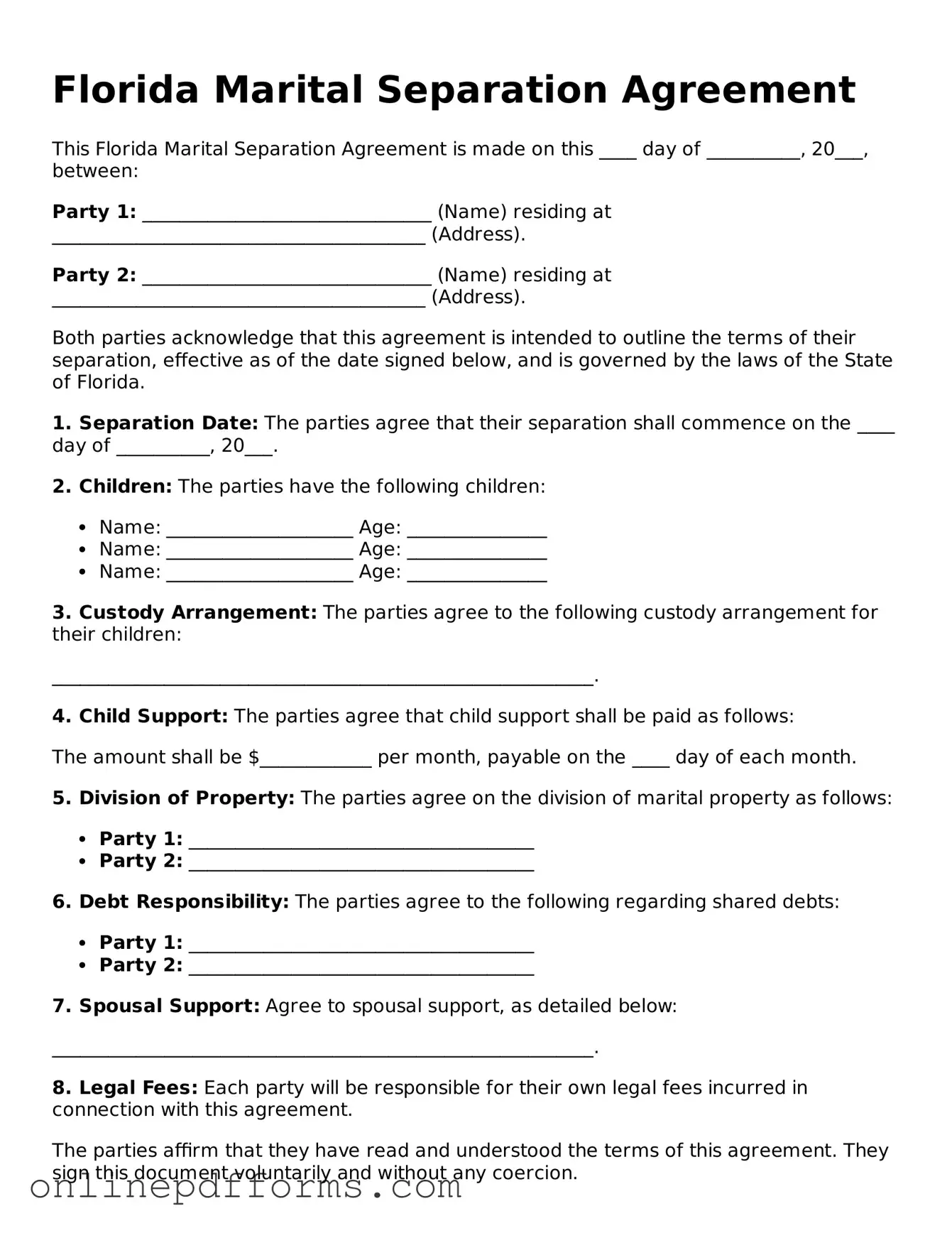The Florida Marital Separation Agreement is similar to a Divorce Settlement Agreement. Both documents outline the terms under which a couple agrees to separate their lives, including asset division, child custody, and support obligations. While a Marital Separation Agreement may be used when couples wish to live apart without legally ending their marriage, a Divorce Settlement Agreement is finalized when the marriage is legally dissolved. The clarity and structure in both documents help avoid future disputes.
Another similar document is the Property Settlement Agreement. This agreement specifically focuses on how marital property will be divided between spouses. Like the Marital Separation Agreement, it addresses the distribution of assets and debts, but it does not necessarily include provisions for child custody or support. Both documents aim to provide a clear understanding of each party's rights and responsibilities regarding property.
A Separation Agreement is also akin to the Florida Marital Separation Agreement. This document is often used when couples decide to live apart but do not want to pursue divorce immediately. It covers similar topics, such as financial support and child arrangements. The key difference lies in the intent; a Separation Agreement can serve as a temporary measure, while the Marital Separation Agreement may indicate a more permanent decision to separate.
The Child Custody Agreement shares similarities with the Marital Separation Agreement, particularly when children are involved. Both documents detail the arrangements for child custody, visitation rights, and child support. While the Marital Separation Agreement may encompass broader financial and property issues, the Child Custody Agreement focuses solely on the welfare and upbringing of the children.
The Parenting Plan is another document that parallels the Florida Marital Separation Agreement. This plan specifically addresses the parenting responsibilities of each spouse. It outlines how decisions regarding the children will be made and establishes a schedule for visitation. Like the Marital Separation Agreement, it aims to create a cooperative framework for co-parenting after separation.
A Cohabitation Agreement can also be compared to the Marital Separation Agreement. This document is used by couples who live together but are not married. It outlines the rights and responsibilities of each partner regarding property and finances. Similar to the Marital Separation Agreement, it serves to clarify expectations and prevent disputes, although it does not involve the complexities of marriage.
For those seeking to rent property in Florida, the comprehensive Rental Application process is crucial for landlords to evaluate potential tenants. This document assists in gathering vital information regarding an applicant's personal and financial background, ensuring a thorough assessment before tenancy is granted.
The Non-Marital Separation Agreement is similar in purpose but applies to couples who are not legally married. This agreement can address issues like property division and financial support, mirroring the structure of a Marital Separation Agreement. Both documents aim to provide clarity and protection for both parties, even if the legal status of the relationship differs.
The Prenuptial Agreement bears some resemblance to the Marital Separation Agreement in that both documents are designed to protect individual interests in the event of a relationship breakdown. A Prenuptial Agreement outlines asset division and financial responsibilities before marriage, while the Marital Separation Agreement does so after the relationship has changed. Both documents aim to minimize conflict and ensure fairness.
Lastly, the Settlement Agreement in a family law case can be likened to the Florida Marital Separation Agreement. This document is often used to finalize the terms of a divorce or separation. It covers similar topics such as property division, spousal support, and child custody. Both documents serve to formalize the agreements made between spouses, ensuring that all parties understand their rights and obligations moving forward.
